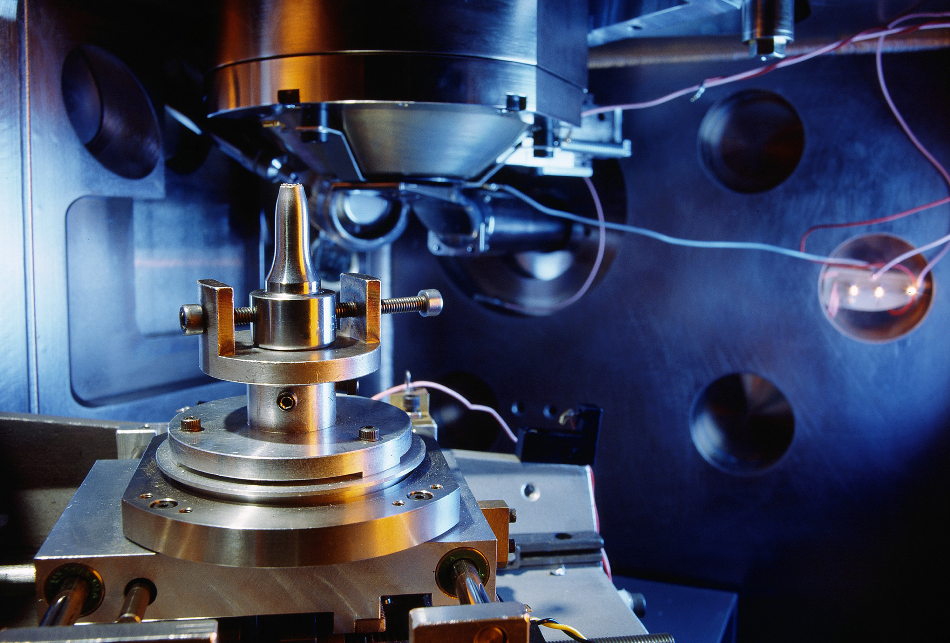Aug 23 2009
Article updated on 16 January 2020.
Nanotechnology is the study and application of extremely small matter (1 to 100 nanometers) and can be used across many scientific fields, such as chemistry, biology, physics, materials science, and engineering.

Image Credit: Bildagentur Zoonar GmbH/Shutterstock.com
At the nanoscale, the chemical, biological and physical properties of materials may differ in fundamental and valuable ways, from the properties of individual atoms and molecules. Nanotechnology presents new opportunities to improve how we measure, monitor, manage and minimize contaminants in the environment.
Chemical Identification and Characterization of Nanomaterials
Nanomaterials have a large surface area to volume ratio. The size and structure of nanomaterials largely depend on the salt and surfactant additives, reactant concentrations, reaction temperatures, and solvent conditions used during their synthesis.
In engineered nanomaterials, size is a critical factor that controls the circulation and navigation of nanomaterials in the bloodstream, penetration across the physiological drug barriers, site- and cell-specific localization and even induction of cellular responses. The importance of the size/shape of nanoparticles must be assessed based on individual cases, due to the wide differences in the behavior of different nanomaterials.
The shape of nanomaterials affects cellular uptake, biocompatibility, and retention in tissues and organs. Further, the disposition and translocation of nanomaterials in the organism may be dependent on their shape, size, and state of agglomeration.
Understanding the physicochemical properties of nanomaterials is essential in evaluating toxicological and ecological hazards. Chemical properties that are important in characterizing materials include composition, structure, molecular weight, boiling and melting points, vapor pressure, octanol-water partition coefficient, water-solubility, reactivity, and stability.
In addition, information on the formulation and manufacture of materials is important in understanding its product variability, purity, performance, and use. It is important to chemically identify and characterize nanomaterials.
Several techniques have been used to characterize the size, crystal structure, elemental composition and a variety of other physical properties of nanoparticles. In many cases, there are physical properties that can be assessed by more than one technique. Different strengths and limitations of each technique complicate the choice of the most suitable method, however, in many instances, a combinatorial characterization approach is required. Some of the modalities capable of characterizing nanomaterials are discussed below:
• Size: DLS, FCS, RS, NSOM, SEM, TEM, STM, AFM, NMR, XRD, SAXS, FS, and several separation techniques are suitable for evaluating the size and size distribution of nanodrug delivery systems.
• Shape: NSOM, SEM, TEM, STM, AFM, XRD and SAXS are proper modalities for shape measurement.
• Surface charge measurement: Zeta potential measurement (ELS), ATR–FTIR, GE, and CE are effective for surface charge measurement. Additionally, TERS, CD, MS, IR, STM, AFM, NMR, XRD, SAXS, FS and some of the thermal and separation techniques can investigate the structural properties of the nanomaterials.
• Stability: The modalities capable of characterizing the stability of nanomaterials are zeta potential measurement, CD, HPLC, HDC and several thermal techniques such as TGA, DSC, ITC, and thermophoresis.
• Purity: Techniques that can characterize the property of purity include NMR, HPLC, and HDC, while the property of composition can be characterized by MS and NMR. Further, the EM- and SPM-derived techniques, such as SEM, TEM, STM, and AFM, can be implemented to characterize the dispersion of nano-based imaging probes.
• Chemical characterization: Techniques that can provide surface chemical characterization and investigation of protein–nanomaterial interactions include CD coupled with an enzyme-linked immunosorbent assay, time-of-flight secondary ion MS, ATR–FTIR, modified AFM, and X-ray photoelectron spectroscopy.
Expansions of the abbreviations used the article:
DLS- Dynamic light scattering, FCS- Fluorescence correlation spectroscopy, RS- Raman scattering, NSOM- Near-field scanning optical microscopy, SEM- Scanning electron microscopy, TEM -Transmission electron microscopy, STM-Scanning tunneling microscopy, AFM- Atomic force microscopy, NMR- Nuclear magnetic resonance, XRD- X-ray diffraction, SAXS- Small-angle X-ray scattering, FS- Fluorescence spectroscopy, ATR–FTIR- Attenuated total reflection -Fourier transform infrared spectroscopy, GE- Gel electrophoresis, CE- Capillary electrophoresis, TERS- Tip-enhanced Raman spectroscopy, CD- Circular dichroism, MS- Mass spectrometry, IR- Infrared spectroscopy, HPLC- High-performance liquid chromatography, HDC- Hydrodynamic chromatography.
Source: EPA Nanotechnology White Paper EPA 100/B-07/001 | February 2007
For more information on this source please visit EPA.